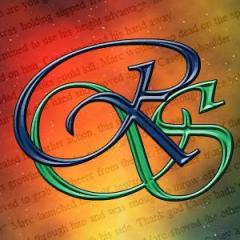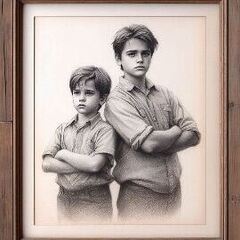So it's time to look at something that a lot of us probably never saw! Today we're bringing you a little gem that was published in one of GA's old newsletters. Have you offered to edit for someone and receive the first chapter only to realize that you have no clue where to start? If so, this editing tip could be very beneficial to you! Even if you don't currently edit, it's still a helpful tidbit full of good advice!
Editing Tips...Getting Started
Volume 2: Edition 1
October 2006
For every seasoned editor at Gay Authors, there are at least two more members interested in volunteering their time to edit for an author. Some keep quiet about it, certain that they don't have the skills or confidence to do the job. Others volunteer and quickly find that the process is a daunting one.
All too often there are posts in the Editor's Corner from members who have volunteered to edit, who have received a chapter from their author and don't have the first clue where to begin. They find themselves staring at pages of text with no clue what they need to do to effectively edit the story in front of them.
This is the first in a series of articles designed to help both new and experienced editors develop their skills. The series will look at all aspects of editing, beginning...well, at the beginning.
Before the editing process even begins, the first thing you need to do is talk to your author about their expectations. The first thing you need to ask is where your author thinks they need the most help. Some will say that spelling and grammar are their weakest areas. Others will say they have trouble with story flow and continuity. Listen to them carefully, take into account everything the have to say and then, when their done, forget about it.
Yep, you heard me - forget about it. I'm both an author and an editor and I can assure you that authors are the worst judges of their own work. Talking to them about their needs will help you build up a rapport with them, but if you're going to be an effective editor then you need to be able to look at all the story elements, not just those your author thinks need examining.
The next step is to discuss with your author the format they'd like the editing to take. Really there are three formats for editing - simply making the changes to the document and sending it back, using the MS Word Track Changes feature (or equivalent) to illustrate the changes you're proposing or using a separate document to note changes that are required.
Always try to encourage your author to use one of the two latter options rather than just expecting you to make changes. The main reason for this is that you might change something that shouldn't be changed, a "mistake" that is intentional, or you may misinterpret what the author is trying to say and end up giving a sentence, or paragraph, a completely different meaning. There is also the fact that any good editor will try to help their author improve their skills and that means giving them the opportunity to learn from their mistakes.
Once the ground rules have been established and you know what your author is expecting of you, it's time to get working on their latest chapter or story. The individual elements of this, such as spelling, grammar, punctuation and the like, will be examined in later articles, but where do you begin? What do you look at first?
The fact is, every editor will eventually develop their own style and processes, but a structured approach to editing is always the best way. Whenever I'm editing, the first thing I do is read the text from start to finish, ignoring any spelling mistakes, grammatical errors and any of the other technical elements. I choose to look at the story flow to see if there are any confusing sections, plot conflicts or other issues that would distract me as a reader first. I do this because looking for the technical problems can be tedious and by the time I'm finished I don't have the same appreciation for the story and thus risk missing story elements on a second read.
After I've looked at continuity and flow, I go back and look for technical errors. The first thing I use is the spelling/grammar checker in MS Word. I set it to check the errors in the story, but don't always trust it to be correct, particularly when it comes to grammar. After the spellchecker has done its job I read through the story, looking at it a paragraph at a time, checking first that there are no spelling, punctuation or grammatical errors and then reading each sentence to look for excessive wordiness - looking to see if what an author has said in twenty words can be said in ten and checking that words are not repeated too much within sentences.
The final thing I do is fact-checking. I go through the story looking for things like a person's hair colour, name, a description of a room or building and then cross reference against mentions of the same person/feature from earlier in the story.
Once this process is complete I set the story aside for a while and then go back to it the following day, reading it through again with the corrections I've made to see if there's anything I've missed.
Of course, this is just how I do it. There really is no right or wrong way to edit, provided you check all the elements and produce something that both you and your author are happy with.
That's all for this edition, but watch out in the next newsletter for more detailed editing tips and in the meantime, if you have any questions, visit the Editor's Corner and see what advice others can offer you.
RHawes16
 2
2







0 Comments
Recommended Comments
There are no comments to display.
Create an account or sign in to comment
You need to be a member in order to leave a comment
Create an account
Sign up for a new account in our community. It's easy!
Register a new accountSign in
Already have an account? Sign in here.
Sign In Now